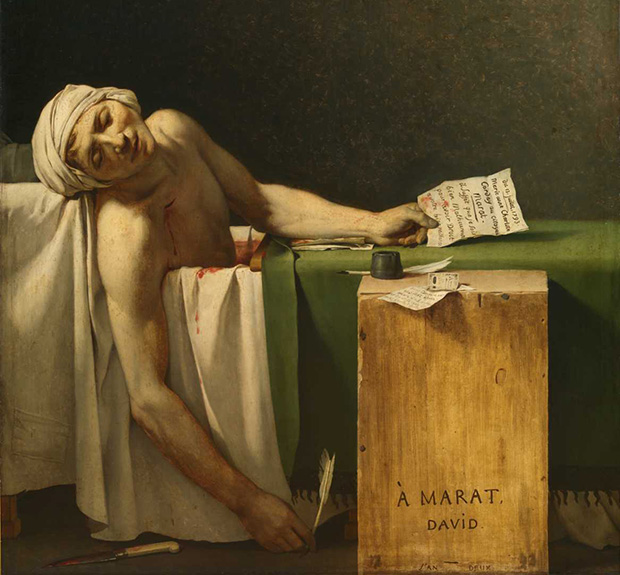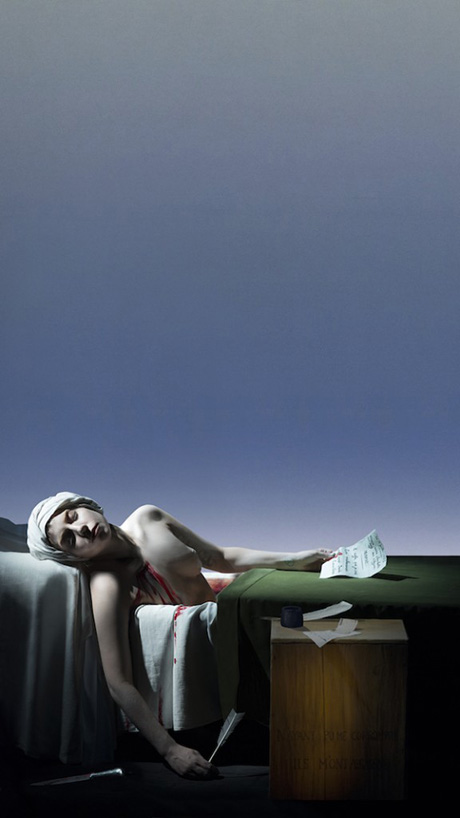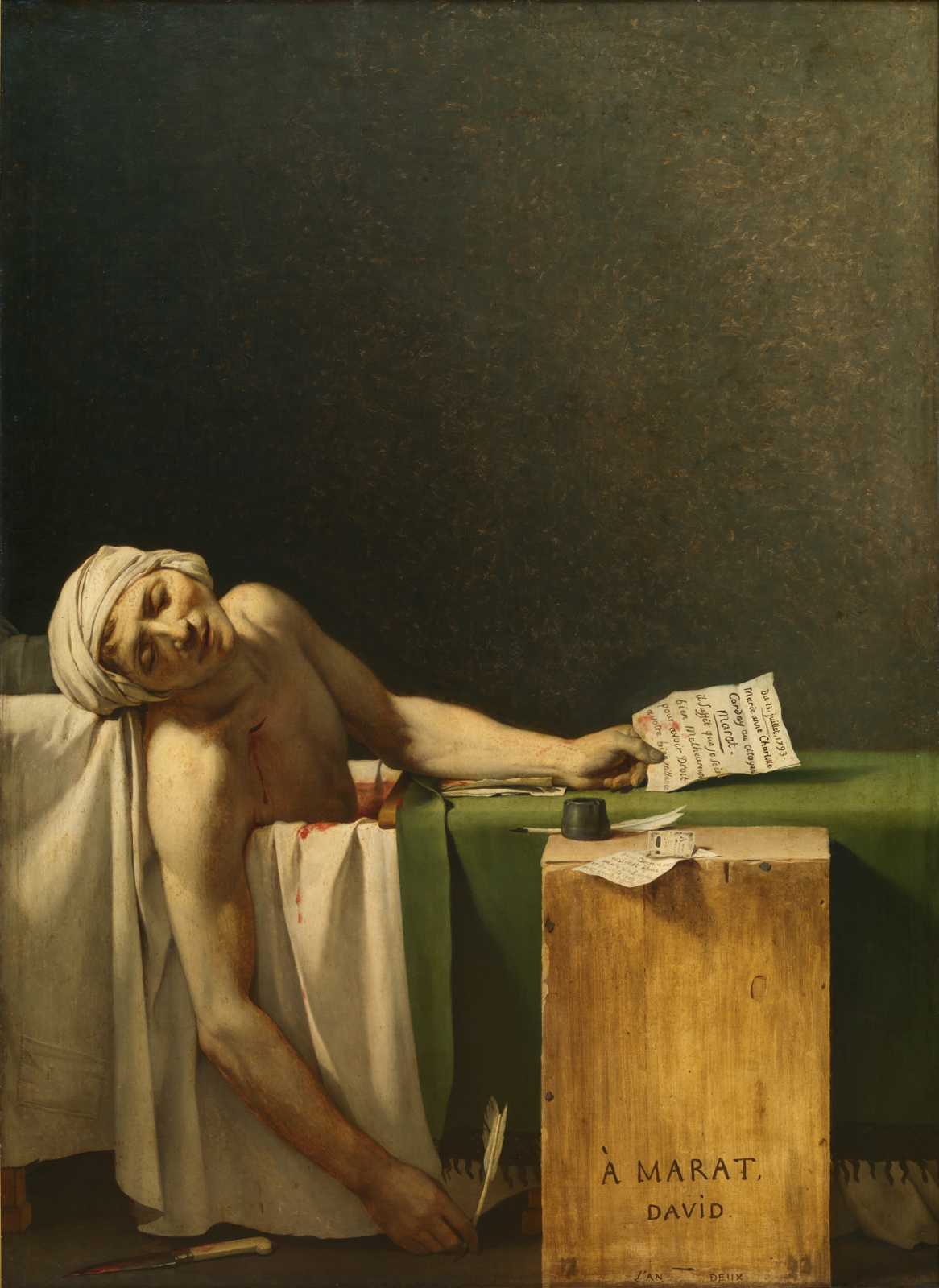
Gombrich Explains the Death of Marat
Lady Gaga recreates the French Revolution work at Art Basel, what does our legendary art historian think of it?
Lady Gaga is coming to Art Basel Miami Beach. Or, more accurately, a video-clip of Gaga is going on show. The singer features in a show of Robert Wilson’s work for Galerie Thomas Schulte in the fair’s Kabinett presentation.
Wilson, an American theatre director and artist, is known for his video portraits, or brief film clips, half way between a still and moving image. He has featured many famous subjects – including Brad Pitt and Johnny Depp – and has recreated well-known paintings, including Rembrandt's Anatomy Lesson of Dr. Nicolaes Tulp and Mary Queen of Scots late sixteenth century portrait in the style of Nicholas Hilliard.
At Miami, Wilson will show his 2013 reworking of Jacques-Louis David’s 1793 work, The Death of Marat, with the singer taking the role of the fallen revolutionary. It’s a striking painting, but why is it worthy of recreation over 200 years after its oils dried? Perhaps because, as the great EH Gombrich suggests in his canonical art history book, The Story of Art, David was able to imbue the modern world with a heroic quality.

In chapter 24, entitled The Break In Tradition, Gombrich describes how the revolutionary ructions of the late eighteenth century altered the way artists viewed their own age, and the suitability of certain subjects when painting a historical-style canvas.
“The French Revolution gave an enormous impulse to this type of interest in history, and to the painting of heroic subjects,” he writes. “The leading artist of this neo-classical style was the painter Jacques-Louis David (1748 – 1825), who was the ‘official artist’ of the Revolutionary Government,” Gombrich explains. David and his fellow revolutionaries “felt they were living in heroic times, and that the events of their own years were just as worthy of the painter’s attention as the episodes of Greek and Roman history.”
“When one of the leaders of the French Revolution, Marat, was killed in his bath by a fanatical young woman,” Gombrich goes on, “David painted him as a martyr who had died for his cause.”
This was no simple task, as the Frenchman had not died on the battlefield, but while bathing. “Marat was apparently in the habit of working in his bath and his bath tub was fitted with a simple desk,” Gombrich writes. “His assailant had handed him a petition, which he was about to sign when he she struck him down. The situation does not seem to lend itself easily to a picture of dignity and grandeur, but David succeeded in making him seem heroic while yet keeping to the actual details of a police record.”

Some of this heroism is apparent in the way David renders the revolutionary’s naked torso, but also in the details that the painter chooses to excise. “He had learned from the study of Greek and Roman sculpture how to model the muscles and sinews of the body,” Gombrich explains, “and gave it the appearance of noble beauty; he had also learned from classical art to leave out all the details which were not essential to the main effect, and to aim at simplicity.”
In this way, the painter managed to make a modern work shot through with ancient qualities. “It is an impressive commemoration of a humble ‘friend of the people’ – as Marat had styled himself – who had suffered the fate of a martyr while working for the common weal,” Gombrich concludes.
Visitors to Art Basel Miami Beach can find out whether the singer brings similar qualities to her video portrait later this week, when the fair opens. Meanwhile, all readers can gain greater insight into this painting and countless others,by buying a copy of The Story of Art here.